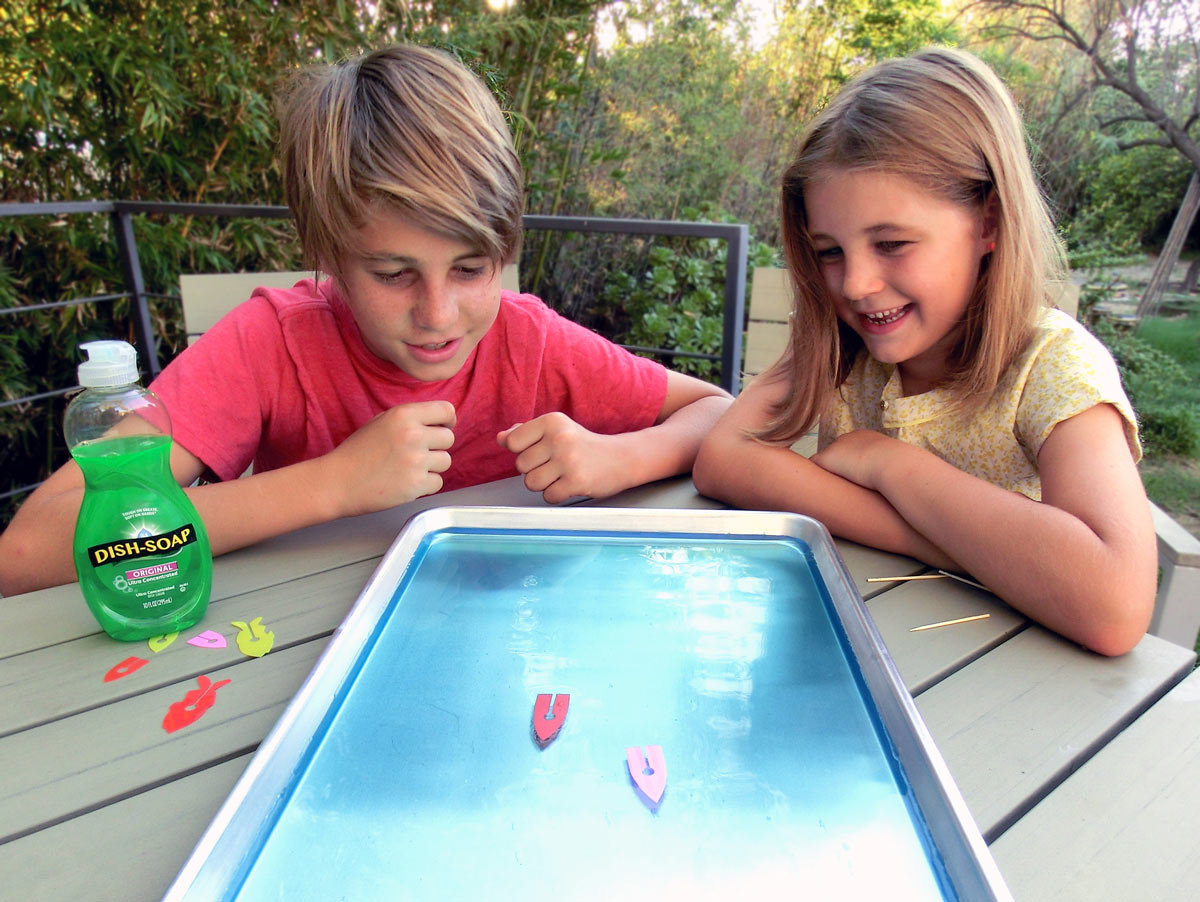

Here’s an update of a Victorian plaything. Cut out the fish on the dotted line and float it on a pan of water. Place a single drop of olive oil in the circle. The oil quickly spreads out the slit and across the water. The fish “swims” in the opposite direction, like an exhaust-spewing rocket subject to Newton’s third law of motion. Sadly, the soggy paper fish is only good for just a single use (Figure A).
Now try this new, more durable version:

Find a flexible lid from a margarine or yogurt container. Look for the recycling symbol 2 or 4 for low- or high-density polyethylene. (PE is one of the few plastics that floats.) Use a paper punch to make a small circular hole, then cut out the “rocket” shape as shown in Figure B.
Float the rocket in a pan of clean water. Dip the tip of a toothpick in detergent and momentarily touch it inside the rocket’s round hole. As the detergent dissolves, it spreads down the slit and out along the surface of the water — the rocket shoots forward! Touch it again. After a time or two, you’ll have to change the water for the effect to work again.

Another force is also at work: the Marangoni effect, the difference in surface tensions created by the molecules of detergent as they make the water slipperier and “wetter.” The surface tension is reduced behind the rocket, causing the water in front to contract, pulling the rocket forward (Figure C below).
These tensions, forces, and actions all exist at the single-molecule-thick surface of the water — similar to the two-dimensional world in Edwin Abbott’s Victorian-era book, Flatland: A Romance of Many Dimensions.











